Affiliate links on Android Authority may earn us a commission. Learn more.
Pocophone F1 review: Can't argue with Snapdragon 845 for $300
Editor’s note: Xiaomi’s new sub-brand is called “Pocophone” internationally and simply “Poco” in India. In case you see the name POCO F1 floating around, it’s the same device as POCOphone F1. Throughout this POCOphone F1 review, we’ll use the international branding.
High-end specs are no longer tied to high-end phones. It’s crazy when you think about it: you can spend under $500 and get the same core specs you’d get if you paid $1000. Sure, you’ll have to make some compromises, but they are tiny compared to the value you get from phones like OnePlus 6, ASUS ZenFone 5Z, or HONOR 10.
It’s the ultimate buyer’s market, and it’s about to get even better, as the POCOphone F1 is here to take on the OnePlus 6 and its rivals.
It’s the ultimate buyer’s market, and it’s about to get even better.
Available starting from just 21,000 rupees (~$300), the first phone in Xiaomi’s new POCOphone sub-brand outprices every other Snapdragon 845 phone on the market. But is it actually better value for money? Found out in our POCOphone F1 review.

About our POCOphone F1 review
Bogdan Petrovan and Abhishek Baxi wrote this POCOphone F1 review after using the phone extensively over multiple days. Bogdan used the entry-level 64GB model and focused on design and general impressions. Abhishek, who used the top-of-the-line model with Kevlar housing and 256GB of storage, focused on performance, the camera, and software.
Design and build quality
The POCOphone F1 looks and feel rather generic. We were obviously not expecting Note 9-like levels of design refinement, but the F1 falls short compared to competitors in its price range, and even some cheaper alternatives.
The feeling of cheapness largely comes from the polycarbonate back of the device. It’s not that it’s shoddy or flimsy, far from it. The finish of the dark grey (Graphite Black) version mimics metal quite well, but the F1 definitely feels less premium than the OnePlus 6 or HONOR 10. On the flip side, the plastic back should fare better when dropped, even if it will scratch and wear faster than glass.
The F1 definitely feels less premium than the OnePlus 6 or HONOR 10.
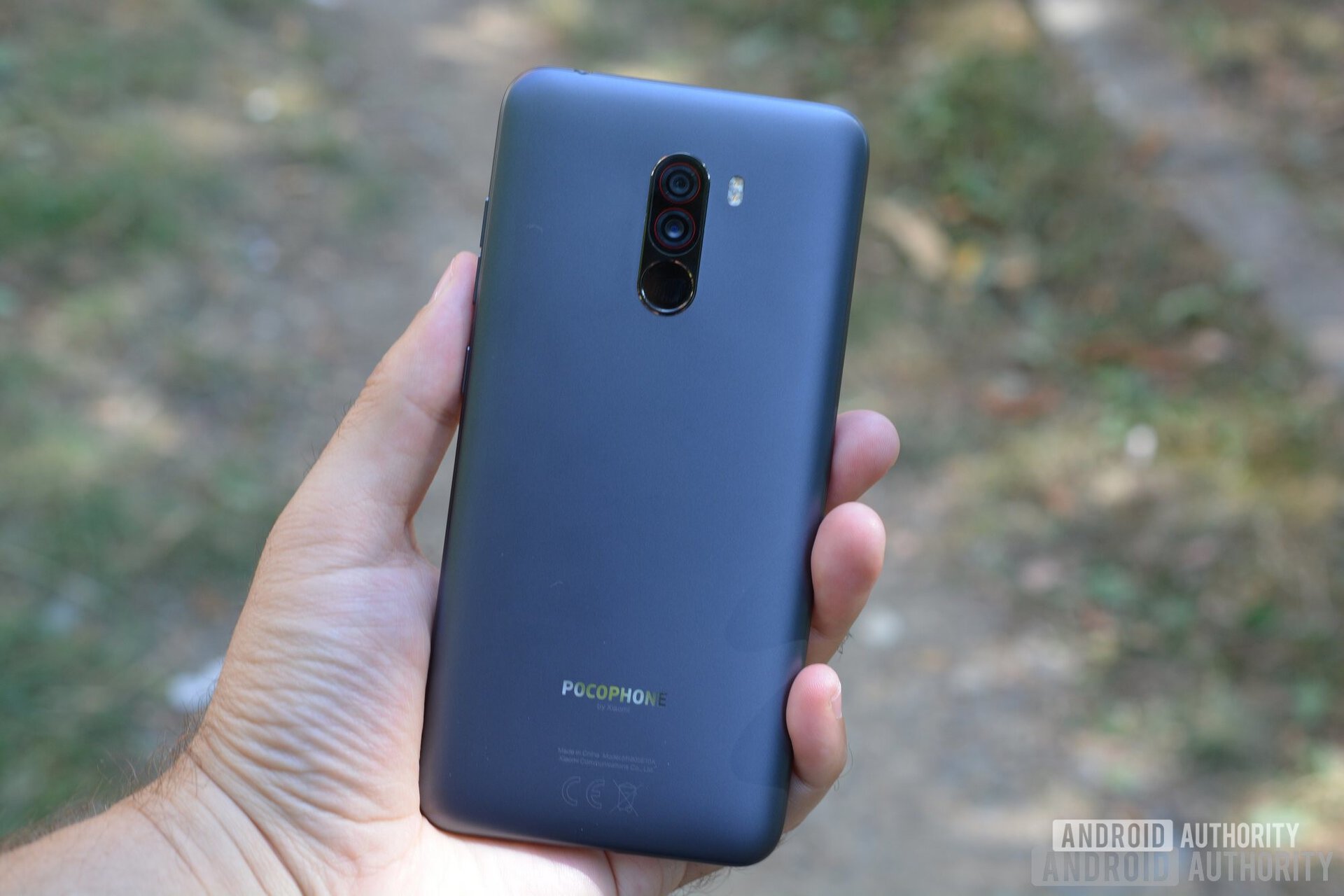
The polycarbonate model is available in Graphite Black, Steel Blue, and Rosso Red.
If you’d like something a little fancier, you should look into the top POCOphone F1 version with 8GB of RAM and 256GB of storage. Called “Armored Edition”, this model comes with a back made of Kevlar fabric that resembles the Motorola Droid Razr from a few years ago. It’s the only version we would feel confident using without a case, as it feels quite sturdy and the extra grip is reassuring. The Kevlar model is only available in black.
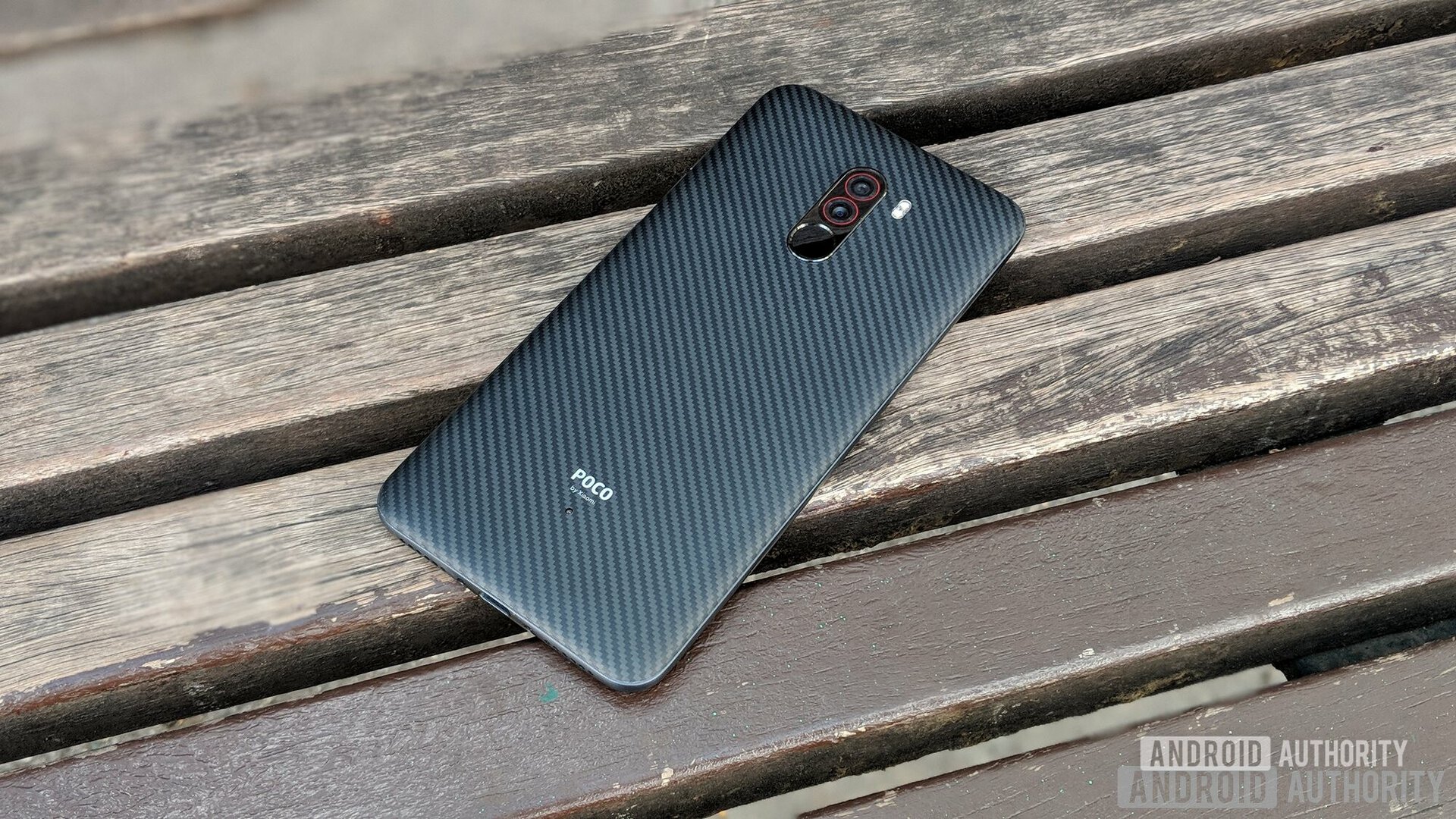
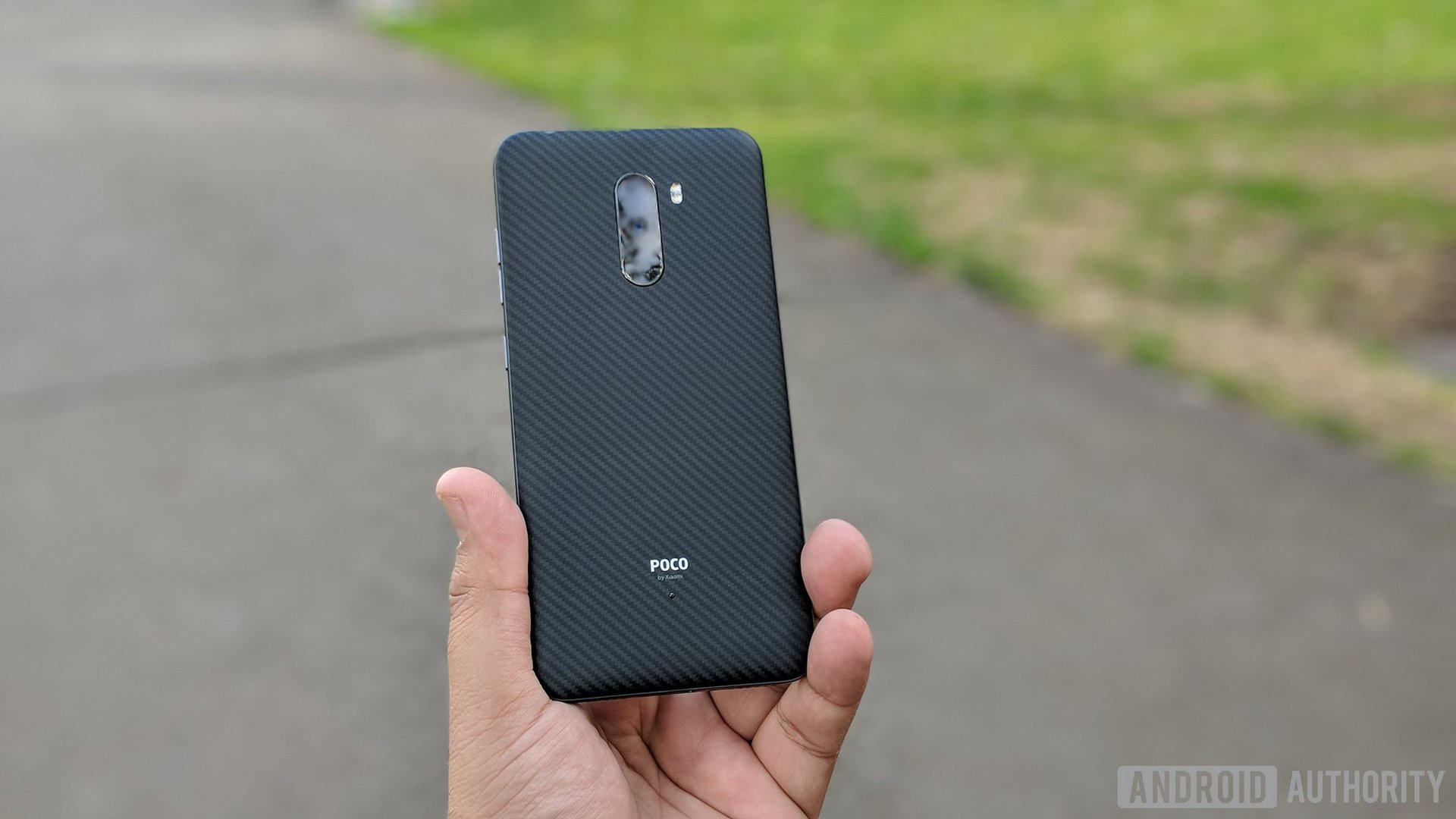
All models come with a thin aluminum frame, with the power and volume buttons placed on the right side. The buttons are a little thin for comfort, but they are crisp, responsive, and easy to reach. The round fingerprint sensor on the back is also easily reachable.
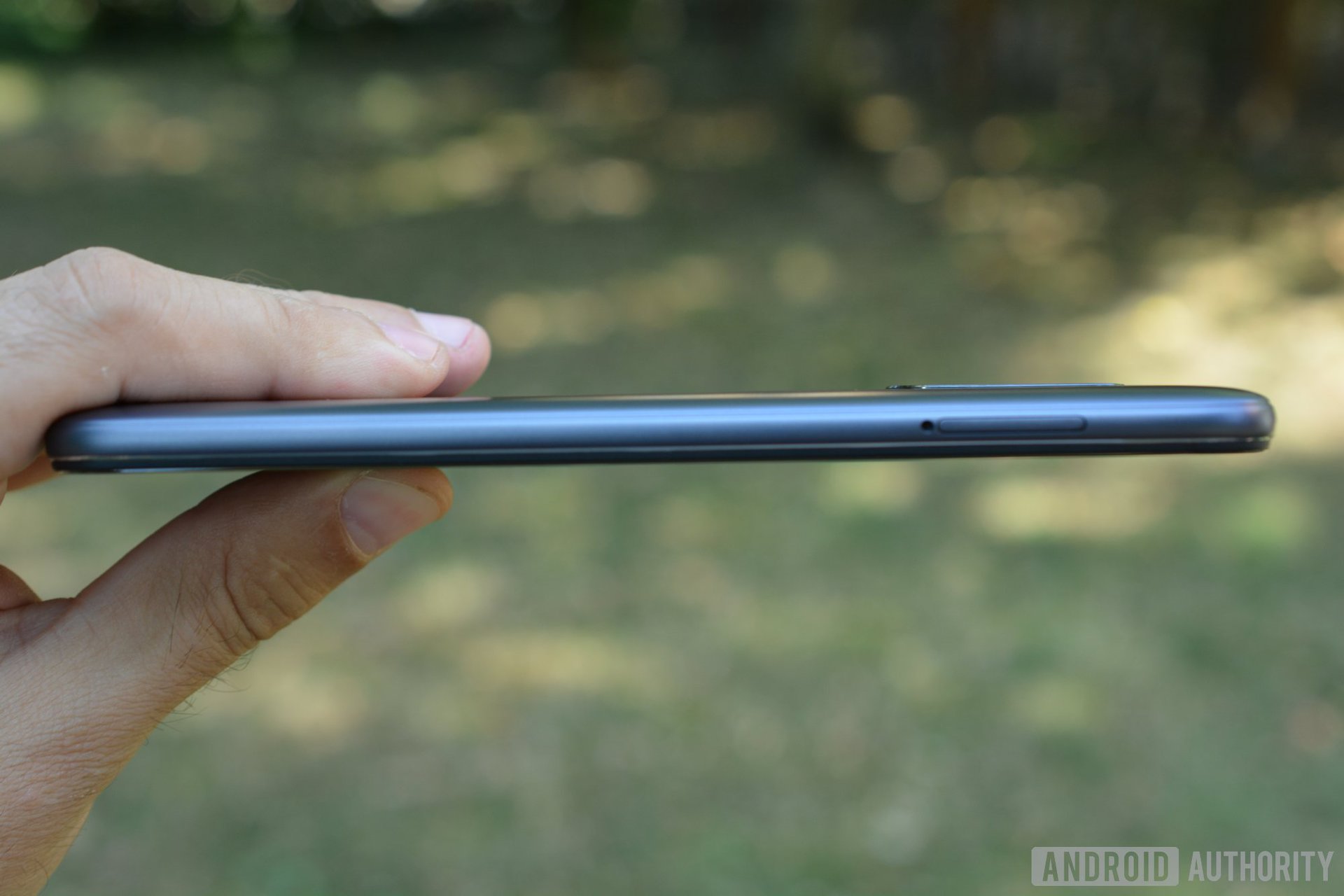
In line with most phones of 2018, the POCOphone F1 has a big notch on the front. Unlike other devices though, the F1’s notch feels out of place due to the thick bezels at the top and bottom. It feels like Xiaomi slapped a notch on an older phone design it had lying around, just to try and look cool (and fail at it). The heavily rounded corners make the bezels even more visible.
The F1’s notch feels out of place due to the thick bezels at the top and bottom.
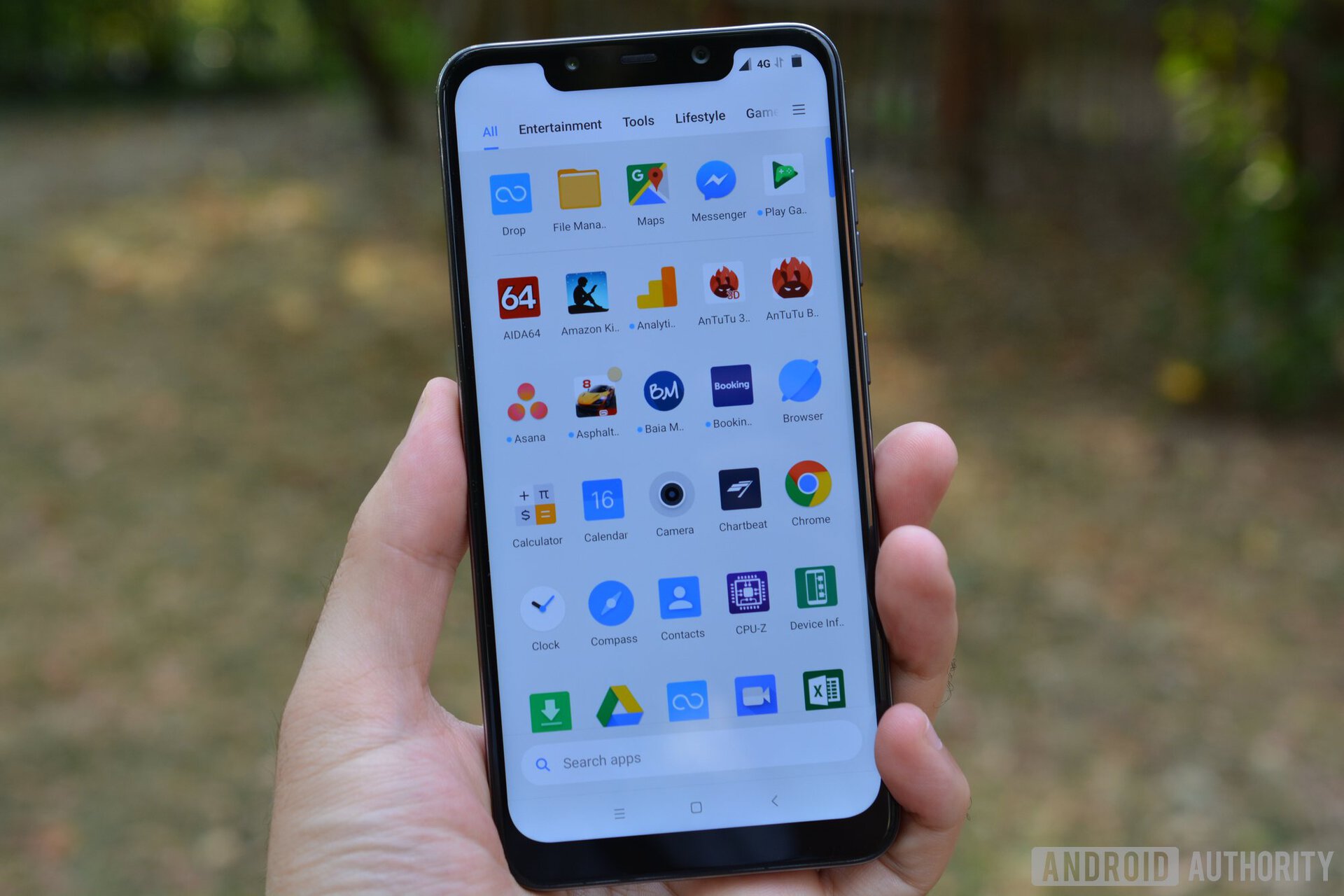
If you like compact designs, the POCOphone F1 is probably not for you. It’s about the same size and weight as the OnePlus 6 (see below), despite its screen being 0.3 inches smaller. It’s not super easy to handle in one hand, but thankfully it’s not slippery, thanks to the plastic back.
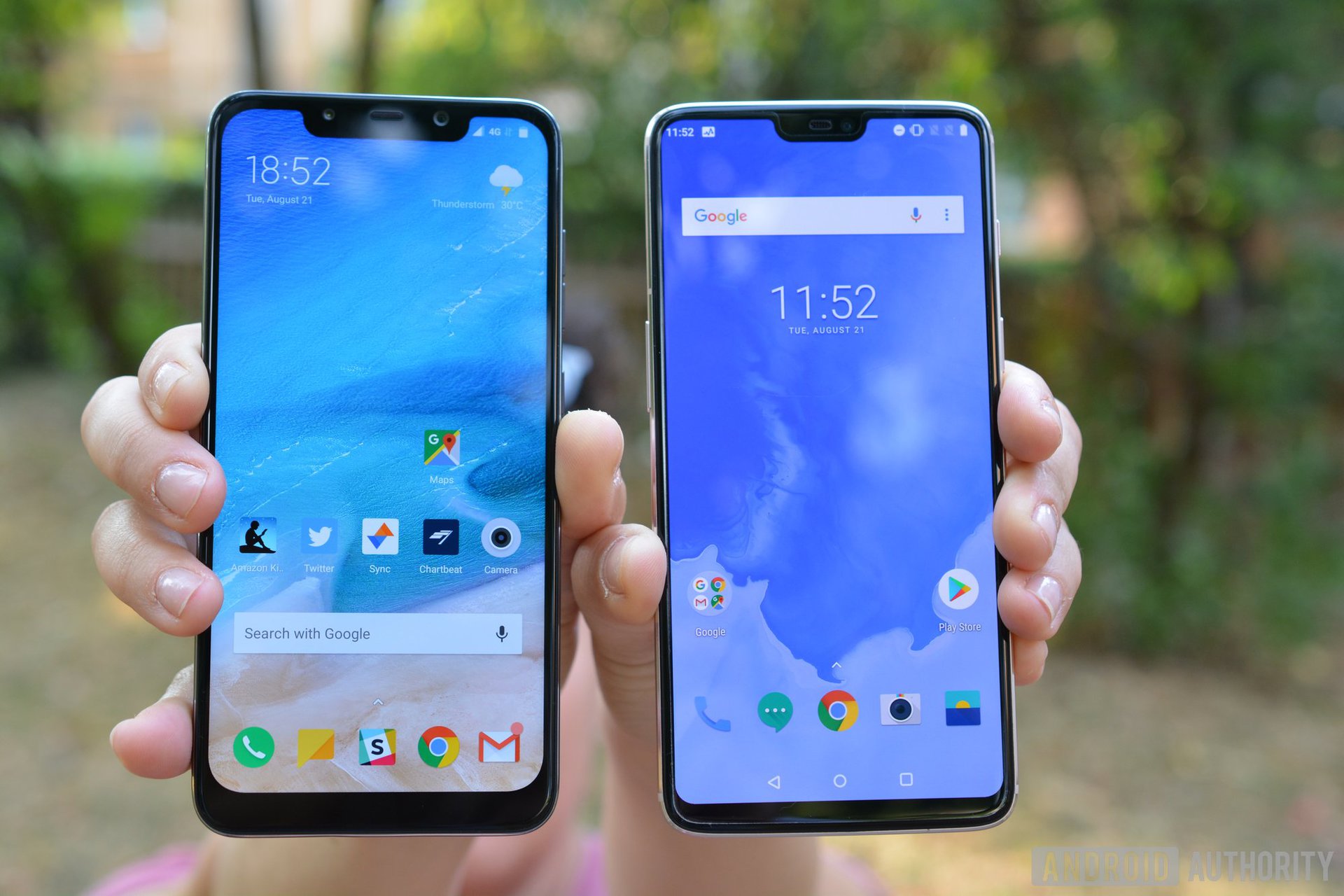
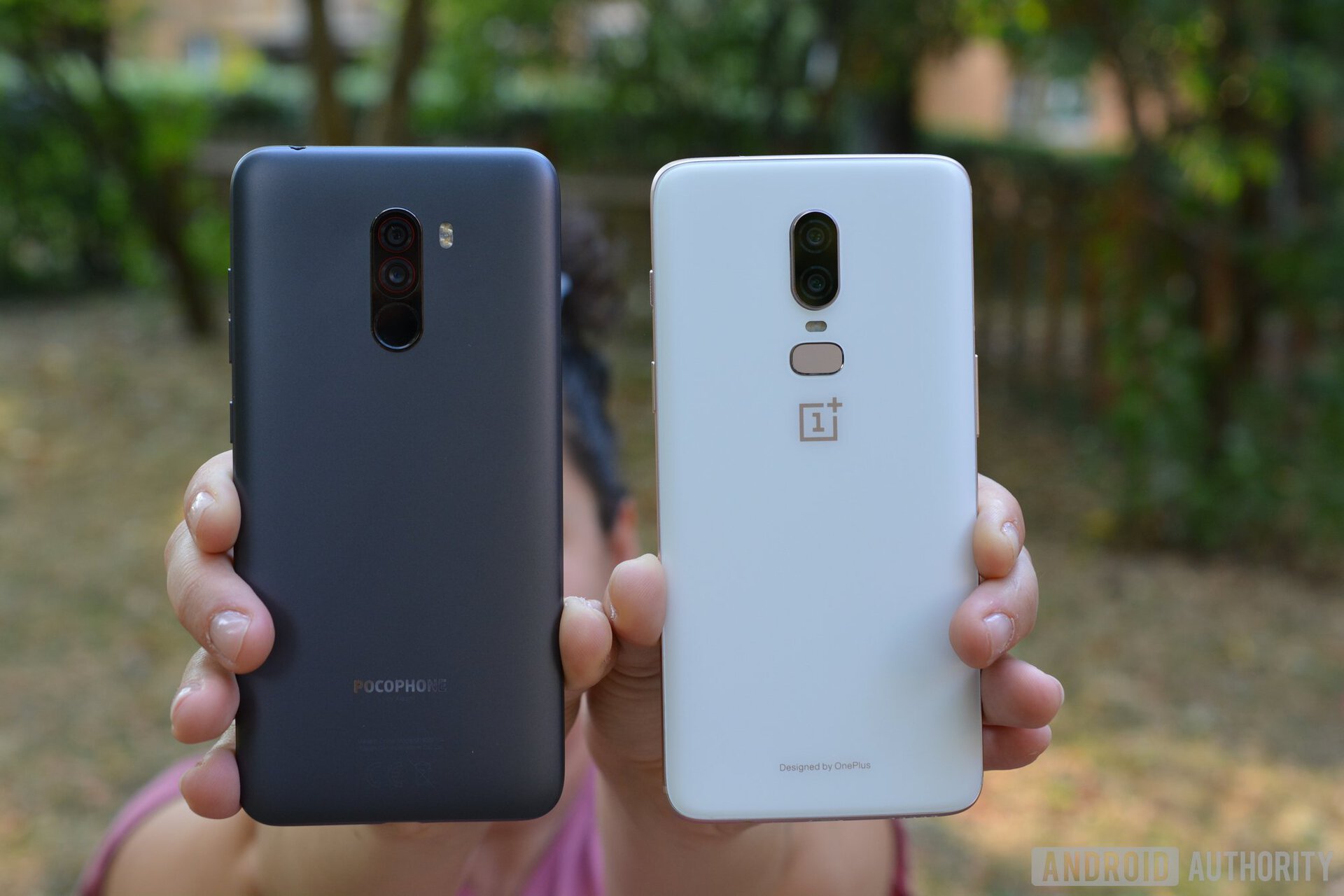
The display
The POCOphone F1 features a 5.99-inch IPS LCD display, featuring a resolution of 1080 x 2246 pixels (18:9). At 416dpi, the pixel density is high enough to make pixels unnoticeable. Colors are nice and punchy, though OLED would’ve obviously got you better contrast rates and viewing angles. The only minor issue worth noting is outdoors legibility – at full brightness, text can be a little smudgy.
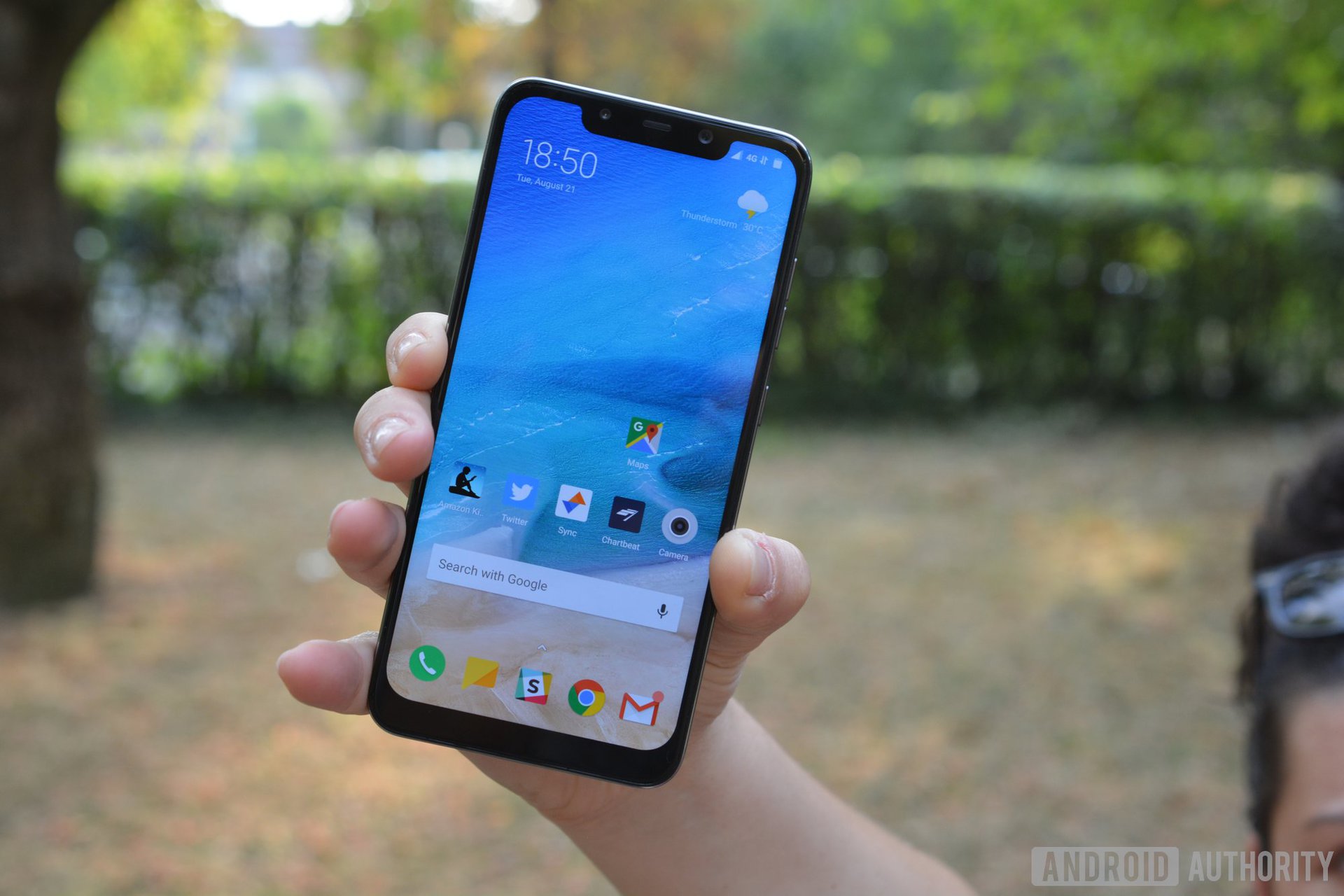
While the screen itself is great, its oleophobic coating isn’t. The glass was covered in smudges as soon as we took the phone out of the box.
The POCOphone F1 does not have always-on display functionality. You can, however, double tap the screen to wake it up, which is always welcome.
Pocophone F1 specs and hardware features
The POCOphone F1 will be available in three memory-storage combinations: 6GB/64GB, 8GB/128GB, and 8GB/256GB. All three versions feature the Snapdragon 845 processor (10nm octa-core with Adreno 630 GPU). That’s quite impressive for a phone that sells for under $500.
Raw specs don’t tell the full story, but the F1 definitely gets all the basics right. Not only does the POCOphone match OnePlus 6 or HONOR 10, it beats phones like the Galaxy S9 or Pixel 2 (and very likely the Pixel 3). On top of this, Xiaomi added a liquid cooling system to help the CPU hum along without overheating. It’s called LiquidCool, and it works by transferring heat from the processor to the other parts of the phone, a bit like an AC unit.
Using the POCOphone F1 is a delight. It’s fast and very smooth.
The battery is excellent too. A 4,000mAh unit should keep you up and running for a full day, potentially two, depending on how hard you push it. We were able to get around nine hours of screen-on time on a single charge, with the screen set to 50 percent brightness and a mix of watching video, browsing, using Reddit Sync, and some gaming. When you tap out, you can get back in the game quickly, thanks to the support for Quick Charge 3 with the bundled 9V/2A charger. There’s no wireless charging though – probably a cost-cutting measure.
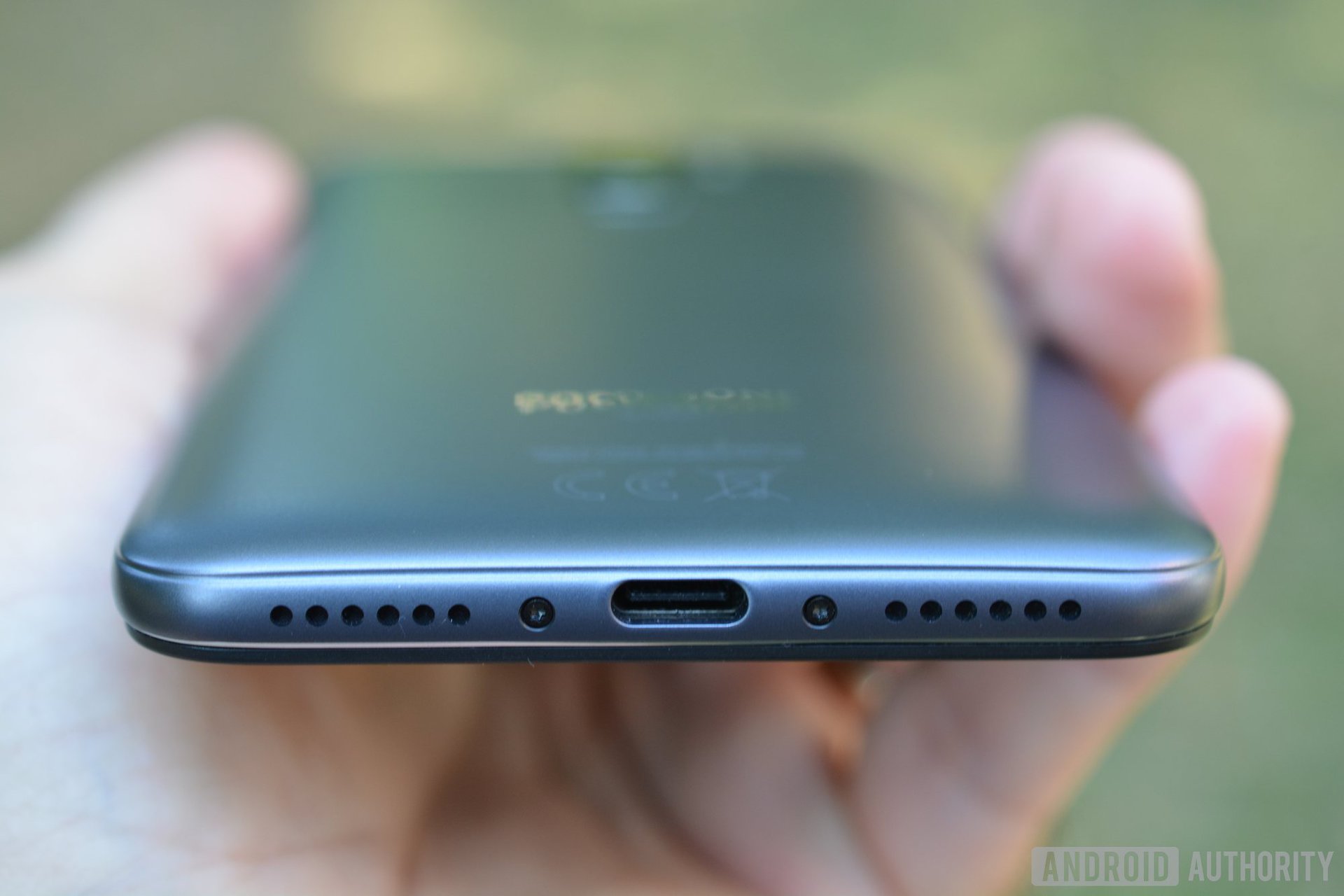
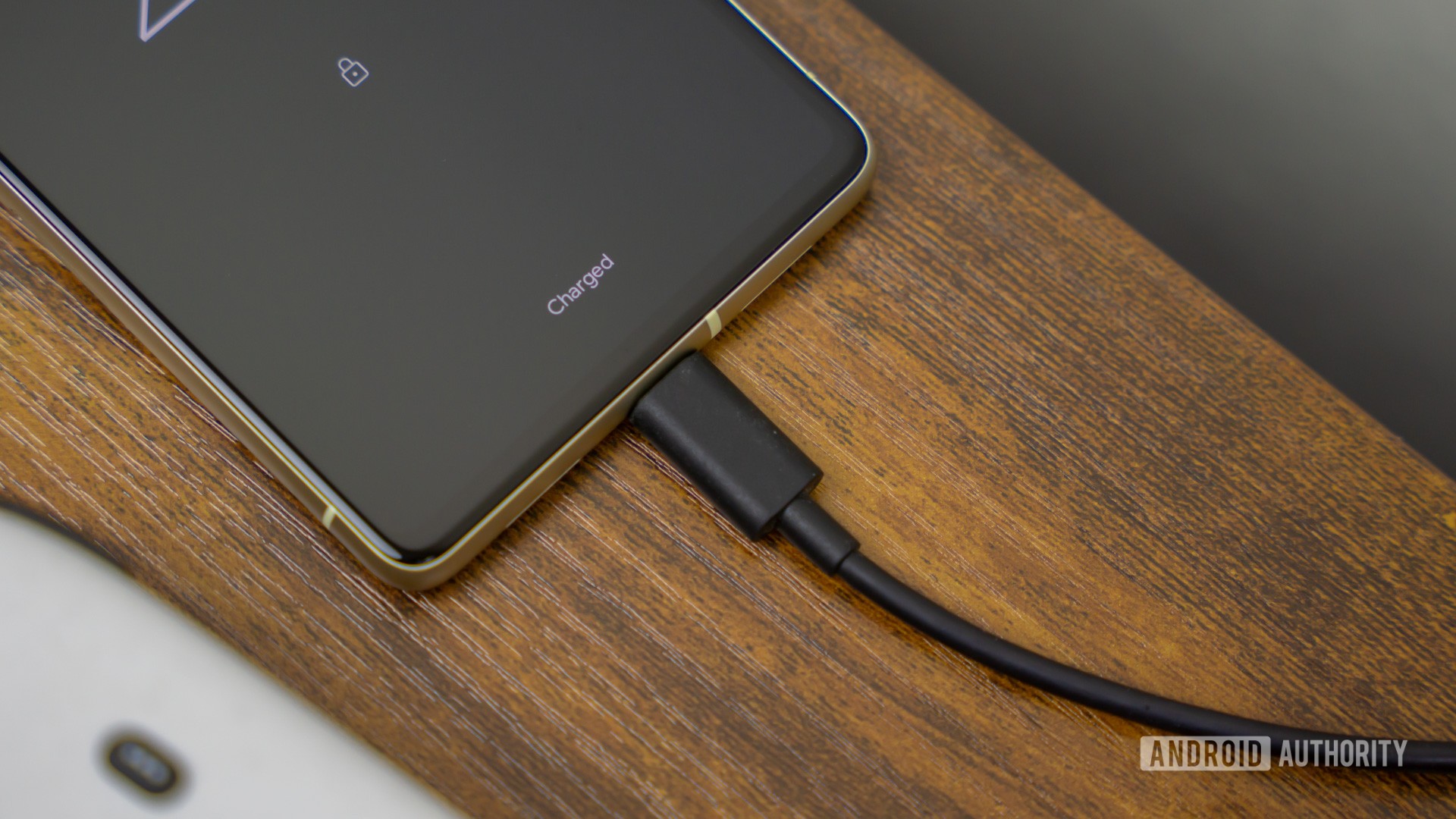
NFC is missing from the POCOphone F1, which is a shame, considering the POCOphone F1 will be sold in Europe, where NFC payment terminals are common.
The USB Type-C port is a welcome surprise. Given how Xiaomi had to cut other features down, we were expecting an older microUSB port similar to the vivo X21.
The POCOphone F1 features a single speaker, found on the bottom (only one of the two grilles houses a speaker). It gets pretty loud, but it tends to buzz at high volumes.
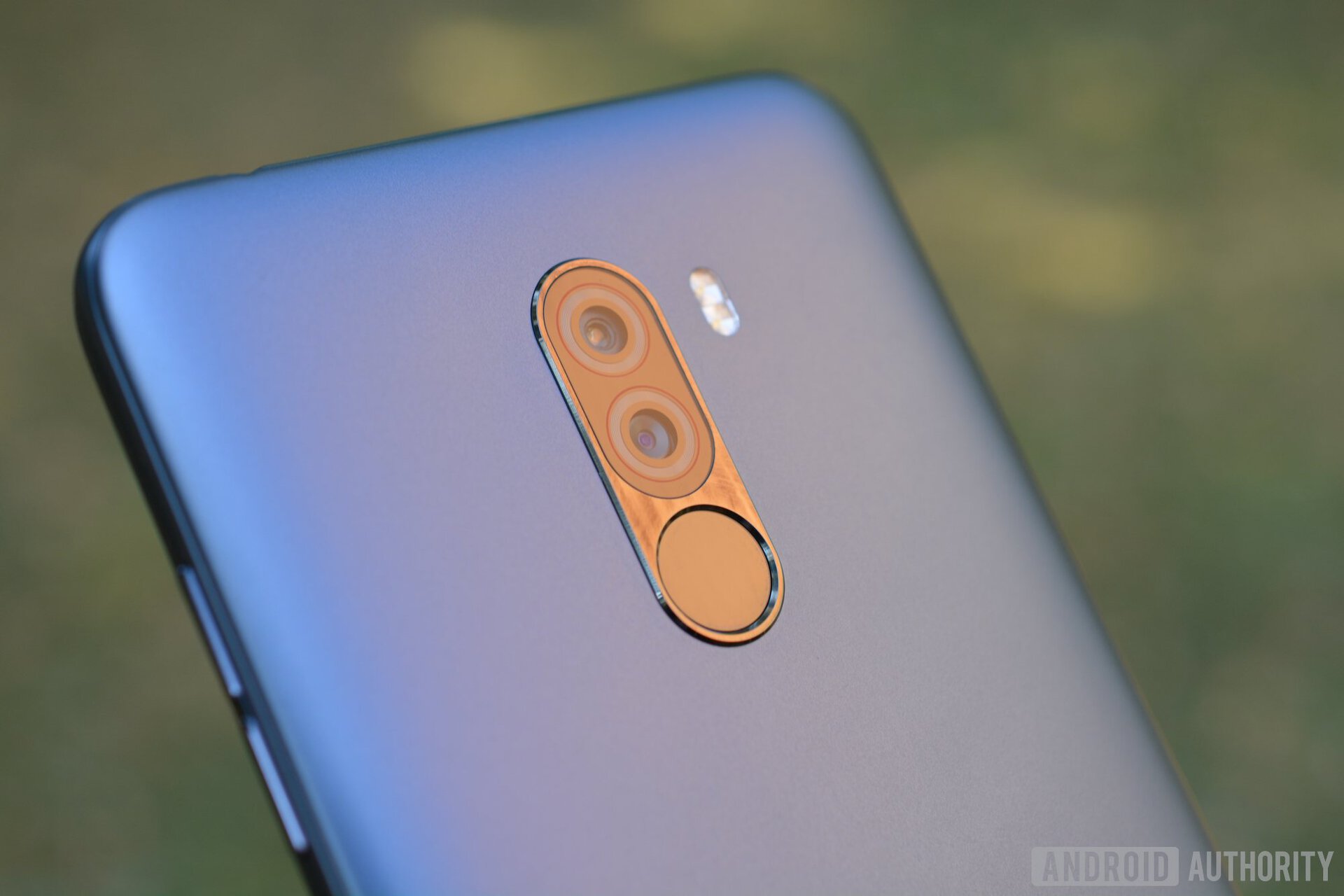
The fingerprint sensor on the back of the F1 is one of the nicest we’ve used. It’s fast and accurate, and the recessed design means you don’t need to fumble around to find it.
The POCOphone F1 also features an infrared-based face unlock sensor, which works fast and accurately. Because it’s IR-based, it functions well in all lighting conditions, negating the need to use the fingerprint sensor in most cases. Xiaomi noted that, in some markets, the feature will be activated with a future software update.
Speed is a big part of Xiaomi’s POCOphone F1 marketing campaign and for good reason – the F1 excels at it.
Pocophone F1 performance
Speed is a big part of Xiaomi’s POCOphone F1 marketing campaign and for good reason – the F1 excels at it. With the top-of-the-line internals it packs, using the POCOphone F1 is a delight. It’s fast and very smooth, with no lag or any jankiness. We didn’t encounter any issues playing graphics-intensive games.
In AnTuTu, the model with 6GB of RAM hit scores in the 240,000 to 260,000 range, which is on par with or above many 2018 flagships.
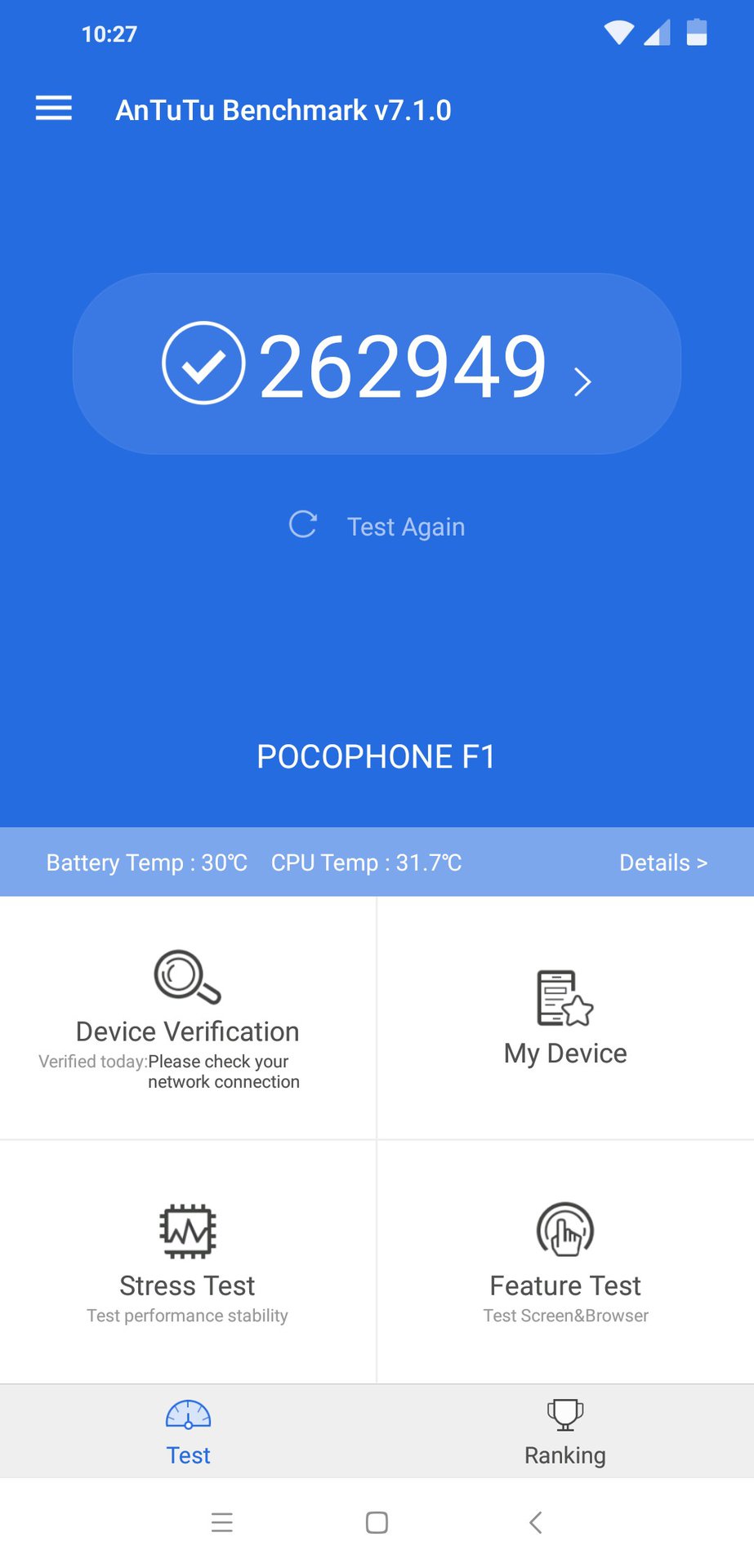
Camera performance
Moving on with our POCOphone F1 review, the rear camera on the device is a tricky thing. In theory, it sounds great – a dual camera setup comprising a 12MP main sensor and a 5MP secondary one for depth information. In practice, performance is inconsistent.
In most cases, especially in good lighting conditions outdoors, the POCOphone F1 manages to take some brilliant shots with a good amount of detail. The portrait mode too is close to perfect, with excellent edge detection. Xiaomi has almost cracked portrait modes on budget and mid-range smartphones, as we saw in the Redmi Note 5 Pro or the Mi A2.

However, in tricky lighting conditions – not necessarily low light – the overexposure and white balance mess up, resulting in botched images.

The shots look highly saturated in most cases, which is usually how we like it. Lot of times, we don’t care about good color reproduction as much as we do about fantastic Instagram-ready shots. But with the F1, there’s too much color saturation sometimes, like when clicking flowers or food, and that’s not a good thing.

The 20MP front camera uses Xiaomi’s pixel binning technology to combine data from four individual pixels. The selfies will serve fine for social media posts, but won’t blow you away.

Overall, the cameras on POCOphone F1 fare well. They’re solid, but not exceptional, which is fair for a smartphone in this price segment, but looks disappointing only because Xiaomi promises the world in its marketing.
Overall, the cameras on POCOphone F1 fare well. They’re solid, but not exceptional.
Software
The POCOphone F1 runs Android 8.1 Oreo, with Xiaomi’s proprietary UI layer, MIUI 9.6. But since POCOphone is a separate sub-brand, there’s a POCO Launcher on top of MIUI. Yes, MIUI over Android, and POCO Launcher on top of MIUI. Launcher-ception!
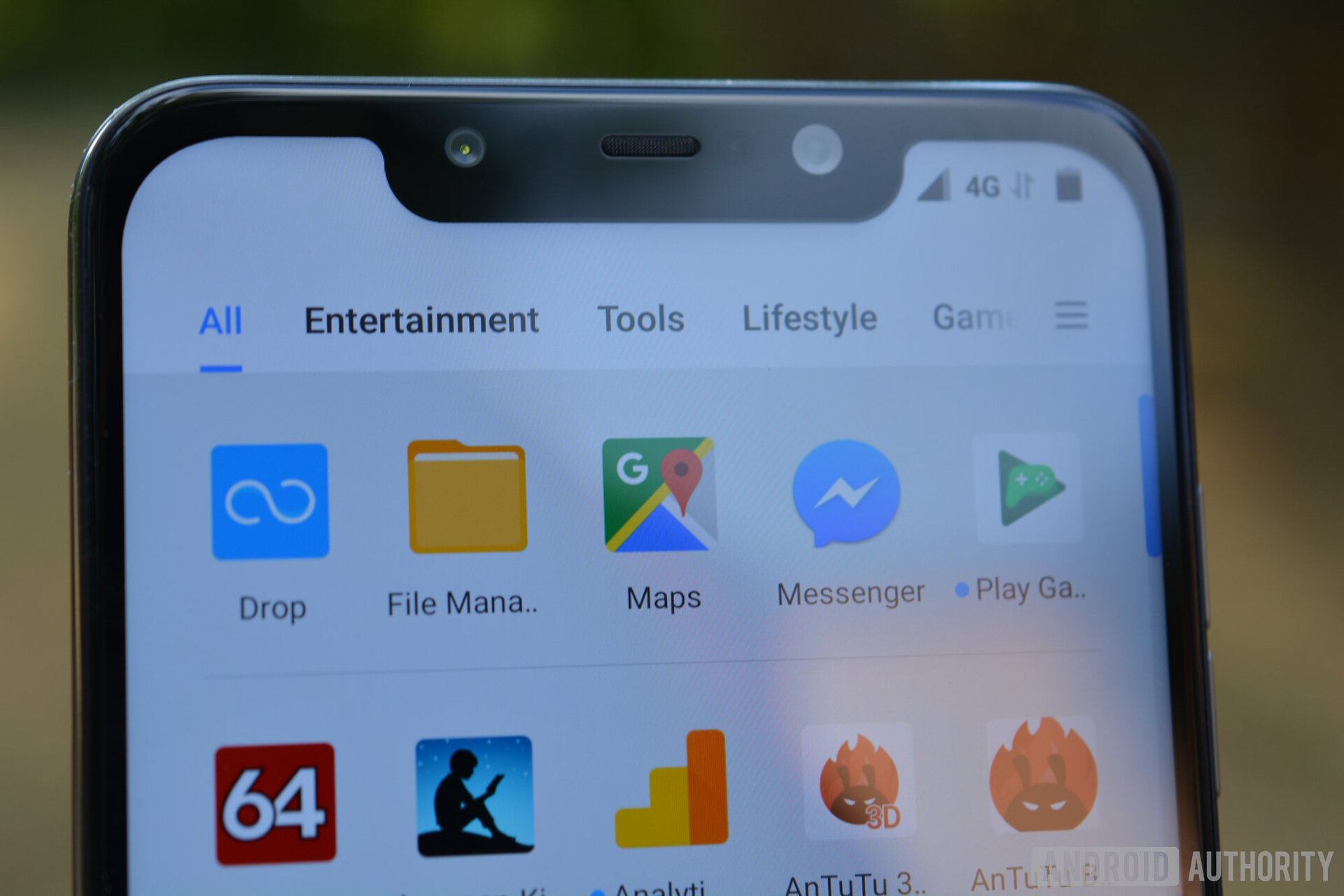
The idea behind the new POCO Launcher is to make it look more like stock Android, similar to what Oxygen OS on OnePlus attempts. This allows Xiaomi to attract fans of the stock Android experience, while adding more features and capabilities.
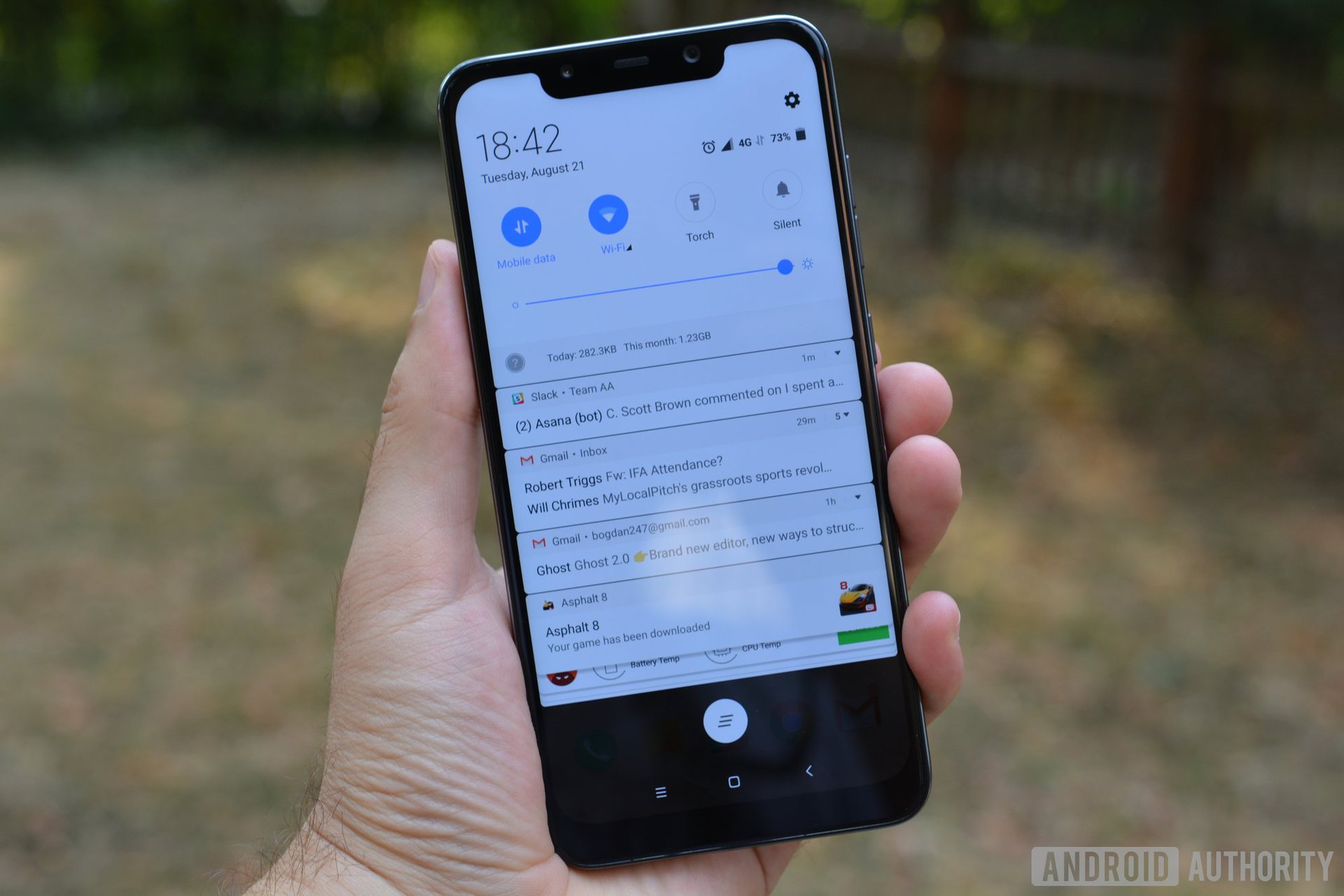
The software on the POCOphone F1 feels quite solid and polished. MIUI is one of the more feature-rich skins out there and has garnered quite a lot of fans for its highly practical features. We’ve been told that upcoming updates to the POCOphone F1 will bring an even better (read, closer to stock Android) user experience for notifications and more.
Xiaomi has promised to deliver the Android Pie update for the POCOphone F1 before the end of this year.
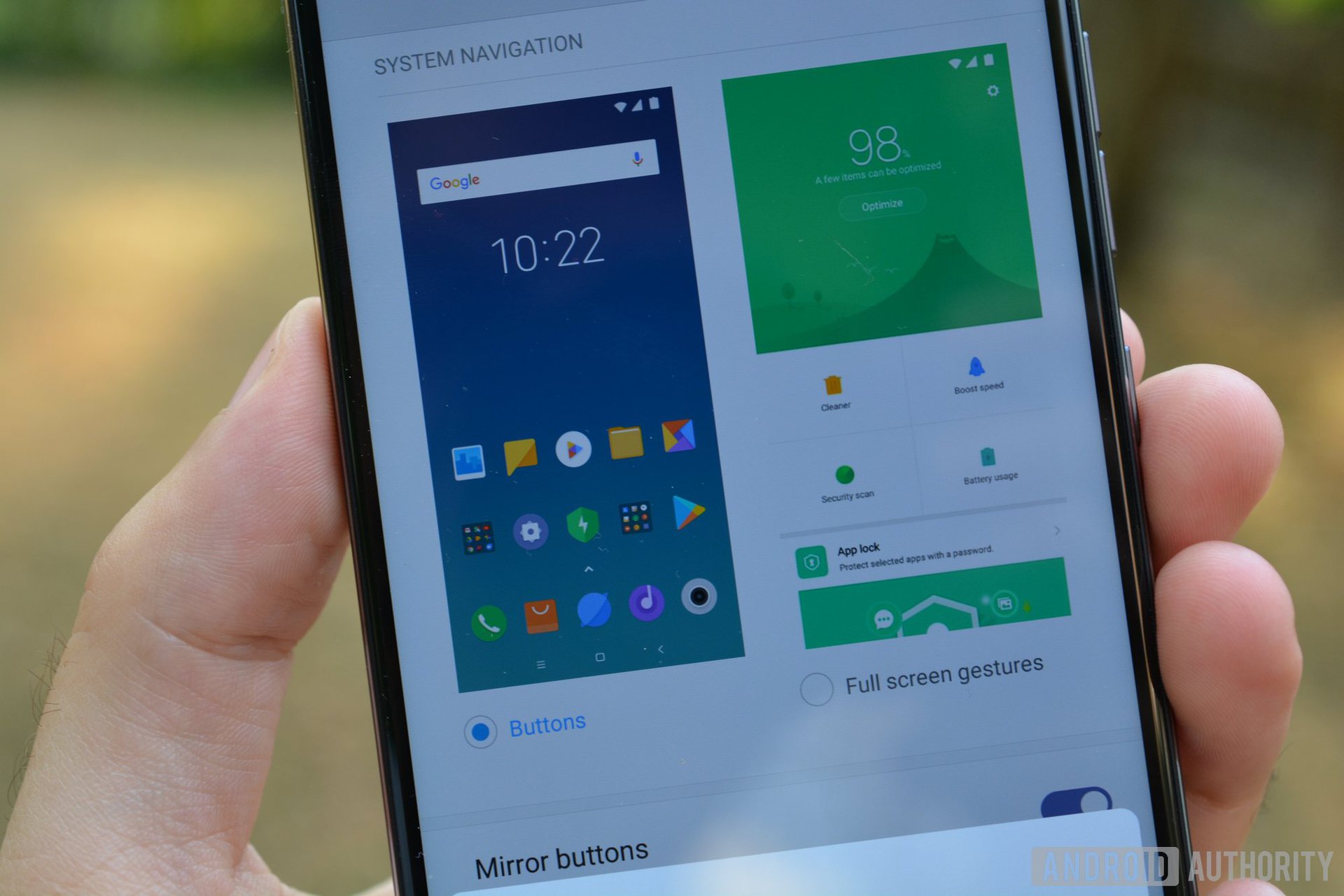
One of the weird issues that we ran into is that the notifications icons don’t show up at all in the status bar. We’re not sure what’s going on there, although this is something that can be fixed with a software update. If that happens, we’ll make sure to update our POCOphone F1 review accordingly.
The competition
The market that Xiaomi is targeting with the POCOphone F1 is extremely competitive, so good pricing is crucial. The phone doesn’t disappoint. In India, the device (sold as POCO F1) will cost 21,000 rupees (~300$) for the 6GB/64GB model, 24,000 (~$345) rupees for the 6GB/128GB model, 29,000 rupees (~$415) for the 8GB/256GB model, and 30,000 rupees (~$430) for the 8GB/256GB model with Kevlar back.
At that price, the POCOphone F1 will go up against:
- OnePlus 6 (6GB RAM and 64GB storage) – Starting from 35,000 rupees (~$500). The OnePlus 6 features a sleeker design, a better screen, a better camera, and more polished software with a great developer community. It has a smaller battery though.
- HONOR 10 (6GB and 128GB storage) – Starting from 33,000 rupees (~470). The HONOR 10 comes with a similar processor, more base storage, and a nicer camera. The design could put you off though and the battery is smaller.
- ASUS ZenFone 5Z (6GB RAM and 64GB storage) – Starting from 30,000 rupees (~430). The design of the 5Z is arguably better and it offers great audio performance. Smaller battery; the software is hit and miss.
- HONOR Play (4GB RAM and 64GB storage) – Starting from 20,000 rupees (~$285). The best price you can probably get for a phone with a flagship SoC. GPU Turbo technology for improved gaming performance. Slightly better design.
More POCOphone F1 review images
Final thoughts
As Xiaomi promised, the POCOphone F1 is all about speed. If you care primarily about having the best performance or you want to make sure your phone will stay fast for several years, then it’s very hard to beat the POCOphone for the money.
If you’re looking for performance and a battery that keeps you going all day, the POCOphone F1 becomes even more compelling.
If you’re looking for performance and a battery that keeps you going all day, the POCOphone F1 is extremely compelling.
The downside is the F1 doesn’t excel at anything else besides the battery life and its great performance-to-price ratio. The design is uninspiring, unless you pick up the more expensive Kevlar model. The cameras are inconsistent at best. There are a lot of software features, but none of them really stand out.
Xiaomi clearly wants to take on the OnePlus 6 and the HONOR 10, but besides similar performance at a much lower price, it doesn’t produce strong reasons to pick up the POCOphone F1, which lacks the refinement of its more mature competitors.
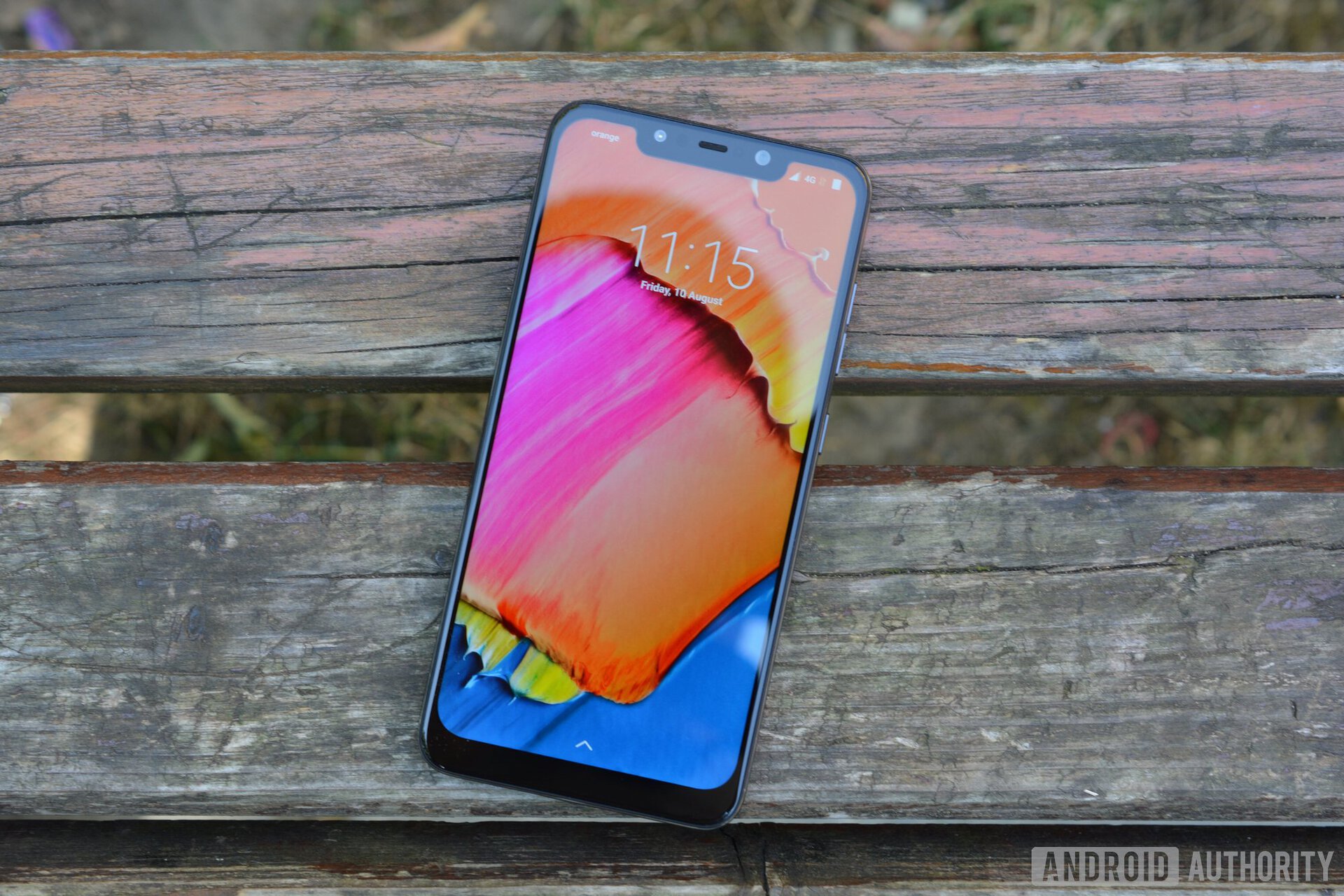
The POCOphone F1 is a good phone, but an amazing deal. If you’re on a tight budget, it should definitely be at the top of your list of options. If you have a little leeway, go try out some of the other phones we mentioned.
The no-frills POCOphone F1 is just the beginning and we’re excited to see where the POCO family can go in the future. It’s not completely clear why Xiaomi decided it needed a sub-brand, considering it could sell the powerful Mi 8 at a competitive price and really give all the “flagship killers” a run for their money. Perhaps the strategy will become clearer over the coming year, as Xiaomi works to differentiate its product lines. For now though, let’s just say that the POCOphone brand is off to a great start.
And that’s it for our POCOphone F1 (aka POCO F1) review. Will you pick up one? Is it a good deal? Let us know your thoughts.